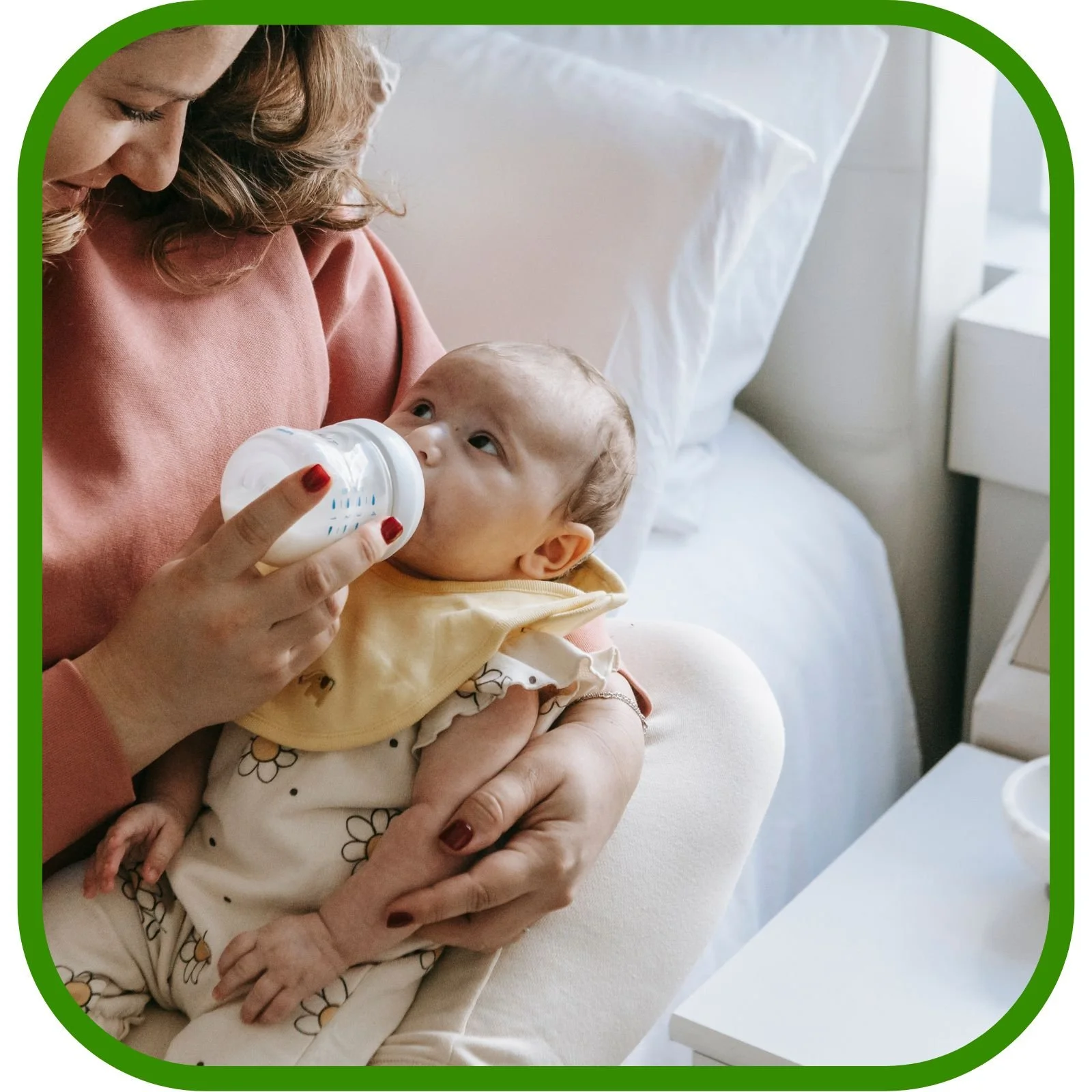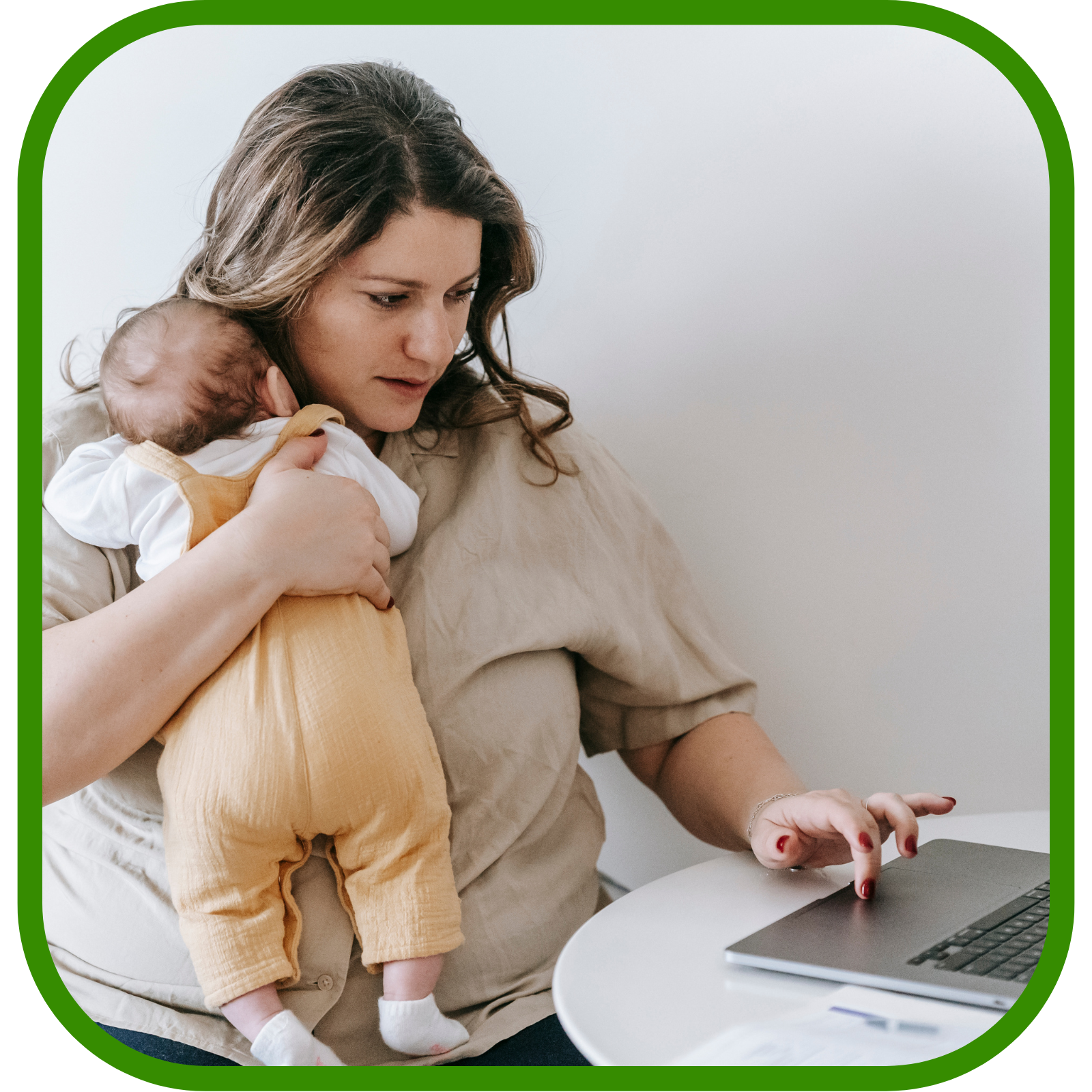Bottle Feeding Your Breastfed Baby
Congratulations on your new little one! Breastfeeding is an amazing journey, but there may come a time when you need or want to introduce a bottle. Whether it's for returning to work, allowing others to feed your baby, or providing more feeding options, this guide will equip you with the knowledge and strategies to make the transition smooth and successful.
Why Introduce a Bottle?
Flexibility and Freedom: Bottles allow caregivers, partners, and family members to feed your baby, giving you a much-needed break or the ability to return to work or other activities.
Partner Bonding: Bottle feeding provides an excellent opportunity for your partner to actively participate in feeding and bond with the baby.
Occasional Supplementation: Bottles can help supplement breastfeeding if you're experiencing supply issues, or for offering expressed breast milk when you're away from your baby.
Medical Reasons: In some cases, medical reasons may necessitate bottle feeding, such as if your baby has trouble latching or needs to gain weight.
When to Introduce a Bottle
The ideal bottle introduction window is generally between 4 and 8 weeks old.
Why this timeframe? Established Breastfeeding: By this age, your milk supply is usually well-established, and your baby is more likely to have mastered a good latch.
Reduced Risk of Nipple Confusion: Introducing a bottle too early can sometimes interfere with a baby's ability to switch between breast and bottle effectively. (Here is a list of bottles that work best.)
Openness to New Experiences: Younger babies are often more accepting of new feeding methods and haven't developed strong preferences yet.
Introducing a Bottle Later: Is it Possible?
Absolutely! While introducing a bottle after 12 weeks can sometimes be more challenging, it's not impossible. Many babies successfully transition to bottle feeding at this age or even later. It requires more patience, persistence, and some creative strategies.
Factors that Can Make Later Introduction More Challenging:
Established Preferences: By this age, babies have grown accustomed to the comfort and familiarity of breastfeeding.
Missed "Critical Period": Some experts believe there's a period in the early weeks where babies are most receptive to new feeding methods.
Stronger Association with Mom: Older babies may strongly associate feeding with the comfort and closeness of breastfeeding with mom.
Decreased Oral Motor Flexibility: Some babies may have a more challenging time adapting to the different sucking patterns required for a bottle.
Increased Awareness and Control: Older babies are more aware of their surroundings and may refuse the bottle if they're not in the mood.
Why Introduce a Bottle Early, Even If You Don't Plan to Use It Regularly?
Even if you're not planning on using a bottle frequently in the early months, it's a good idea to introduce one between 4-8 weeks. This is because it becomes increasingly harder to introduce a bottle after about 12 weeks, as babies develop stronger feeding preferences. By introducing a bottle early on, you're keeping your options open and making it easier to use a bottle later if the need arises. This can be helpful for unexpected situations, occasional date nights, or if you decide to return to work sooner than anticipated.
Tips for Introducing a Bottle (at Any Age)
Start Slow and Steady: Offer just one bottle daily when your baby is calm and content, not overly hungry or fussy.
Gradual Increase: Slowly increase the number of bottle feedings as your baby gets used to it.
Paced Feeding: Hold your baby upright and let them control the pace of feeding, similar to breastfeeding. This helps prevent overfeeding and allows them to feel more in control.
Experiment with Bottles and Nipples: Try different bottles and nipples to find your baby's preference. Some babies prefer nipples with a slower flow, while others may prefer bottles that mimic the shape of the breast.
Enlist Help: Have your partner, a family member, or a caregiver offer the bottle, especially if your baby is older and strongly associates feeding with you.
Create a Calm Environment: Make sure the feeding area is quiet and relaxed to minimize distractions and help your baby focus on feeding.
Skin-to-Skin Contact: Hold your baby skin-to-skin while bottle feeding to enhance bonding and comfort.
Warm the Bottle: Warm the bottle to body temperature to make it more appealing to your baby.
Try Different Positions: Experiment with different feeding positions to see what your baby prefers.
Be Patient and Persistent: It may take several tries for your baby to accept a bottle. Don't give up! Keep offering it consistently and patiently.
Special Considerations for Returning to Work
If you're planning to return to work and need your baby to reliably take a bottle, aim to introduce it a few weeks before your return date. This gives your baby time to adjust and allows you to troubleshoot any challenges.
Practice with Caregiver: Have your caregiver practice feeding your baby a bottle while you're out of the house for a short period. This helps your baby get used to taking a bottle from someone else.
Pumping and Storing Milk: If you plan to provide breast milk in bottles, familiarize yourself with pumping and storing breast milk safely.
Communicate with Caregiver: Maintain open communication with your caregiver about your baby's feeding habits and preferences.
Remember:
Every baby is unique, and what works for one baby may not work for another. Be flexible and adapt your approach as needed.
Trust your instincts. If you have any concerns about your baby's feeding, don't hesitate to contact your pediatrician or a lactation consultant. They can offer personalized guidance and support.
Enjoy this special bonding experience with your little one, whether breastfeeding or bottle feeding!



